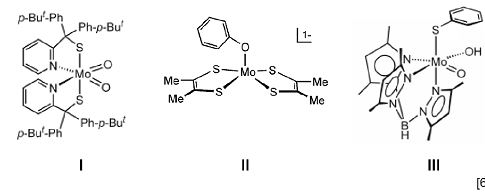Assignment:
(a) The following complexes I, II, and III represent model compounds for the molybdenum-containing enzymes involved in oxygen-atom transfer (OAT) reactions.
In each case assign the formal oxidation state of the metal centre and clearly show your reasoning:

(b) Some molybdenum-containing enzymes are capable of reducing sulfoxides (R2SO) to the corresponding sulfides (R2S), see reaction below.

Which of the complexes shown in (a) is able to perform this reaction?
State the reasons for your choice and describe, with the aid of diagrams, the mechanism involved clearly stating the oxidation state of the molybdenum centre at each step.
(c) In many OAT reactions the oxygen acceptor is commonly a phosphine and these reactions are initiated through nucleophilic attack at the molybdenum centre by the phosphine lone pair.
Which one of the complexes shown in (a) would readily participate in OAT with Ph3P?
What would be the products of this reaction and what would be the oxidation state of the metal centre in the molybdenum-containing product?
Also, suggest how this complex is able to prevent comproportionation that can complicate attempts to model the OAT chemistry of molybdenum.
Provide complete and step by step solution for the question and show calculations and use formulas.